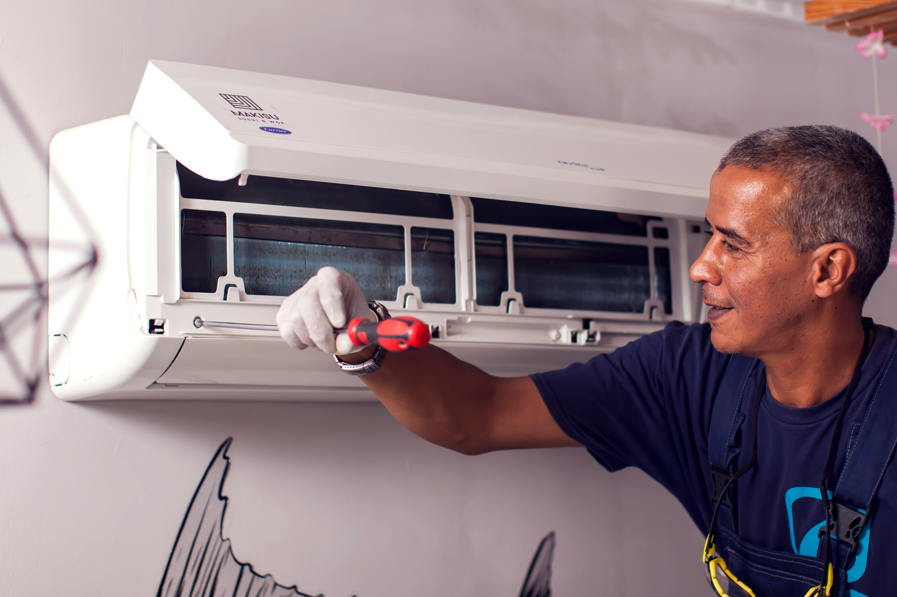When summer heat becomes unbearable, the temptation to tackle air conditioning installation as a weekend DIY project can be strong. After all, how hard could it be? The reality is that AC installation involves complex electrical work, refrigerant handling, and precise calculations that go far beyond basic home improvement skills. Understanding why this job requires professional expertise can save you money, time, and potentially dangerous situations.
The Complexity Behind the Cool Air
Air conditioning systems are intricate mechanical marvels that require more than just connecting a few wires and pipes. Modern AC units involve sophisticated refrigeration cycles, electrical components that must be properly sized and connected, and ductwork that needs precise calculations for optimal airflow. The installation process requires understanding load calculations, refrigerant pressures, electrical requirements, and local building codes.
Each component must work in perfect harmony with others. A small mistake in refrigerant line installation can lead to system inefficiency or complete failure. Improper electrical connections can create fire hazards or damage expensive equipment. Even seemingly simple tasks like mounting the outdoor unit require knowledge of proper drainage, clearance requirements, and structural considerations.
Safety Concerns That Can’t Be Ignored
AC installation presents multiple safety hazards that weekend warriors often underestimate. Working with electrical systems poses risks of electrocution, especially when dealing with the high-voltage connections required for most AC units. Refrigerant handling requires special training and equipment, as these chemicals can cause frostbite, suffocation, or environmental damage when mishandled.
The physical demands of installation also create safety concerns. Outdoor units are heavy and awkward to maneuver, often requiring installation in challenging locations like rooftops or elevated platforms. Indoor components may require working in cramped spaces or at heights. Professional installers have the proper equipment, training, and experience to handle these hazards safely.
Code Compliance and Legal Requirements
Building codes and local regulations govern AC installation in most areas, and these requirements are constantly evolving. Professional installers stay current with these regulations and ensure installations meet all applicable standards. DIY installations that don’t comply with codes can result in failed inspections, fines, or even requirements to completely redo the work.
Permit requirements vary by location, but many jurisdictions require permits for AC installation work. Professional contractors typically handle permit applications and ensure all work passes required inspections. Attempting DIY installation without proper permits can create legal complications and affect property values or insurance coverage.
The Hidden Costs of DIY Installation
While DIY installation might seem cost-effective initially, hidden expenses often make it more expensive than professional installation. Specialized tools required for AC work can cost hundreds or thousands of dollars. Refrigerant handling requires specific equipment and certification. Mistakes during installation can damage expensive components, requiring costly repairs or complete system replacement.
Time investment is another hidden cost. What professionals can complete in a day might take inexperienced DIYers an entire weekend or multiple weekends. This doesn’t account for time spent researching, troubleshooting problems, or correcting mistakes. The learning curve for proper installation techniques is steep and expensive when mistakes damage equipment.
Professional Expertise Makes the Difference
Professional AC installers bring years of training and experience to every job. They understand the nuances of different systems, local climate considerations, and optimal installation practices. This expertise ensures systems operate efficiently from day one and continue performing reliably for years.
Professionals also provide valuable services beyond basic installation. They can recommend appropriate system sizes for specific spaces, identify potential problems before they become costly repairs, and optimize system performance for maximum efficiency. Their knowledge of different brands and models helps ensure you get the best system for your specific needs and budget.
Warranty Protection and Long-term Value
Most AC manufacturers require professional installation to maintain warranty coverage. DIY installation typically voids these warranties, leaving you responsible for all future repairs and replacements. Professional installation protects your investment and ensures you can take advantage of manufacturer support when needed.
Professional installers like McGhee’s Heating and Air Conditioning also might provide their own warranties on installation work, giving you additional protection beyond manufacturer coverage. This means if installation-related problems arise, you have recourse for repairs without additional costs.
Making the Smart Choice
While the DIY approach might seem appealing for cost savings, AC installation is one home improvement project where professional expertise is essential. The complexity of modern systems, safety requirements, code compliance needs, and long-term reliability concerns make professional installation the smart choice. Investing in proper installation from the start ensures your AC system provides reliable, efficient cooling for years to come while protecting your home and family from potential hazards.
